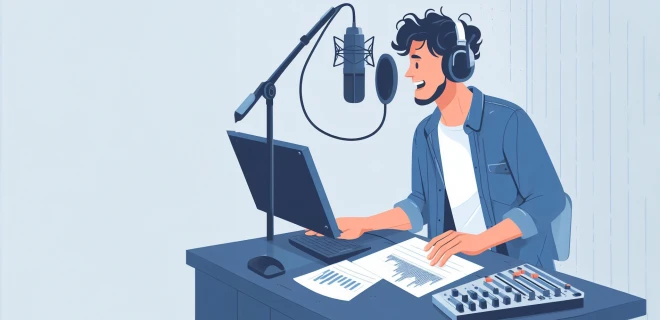Dubbing is a fascinating process that has revolutionized the way we consume media. From films and TV shows to video games and social media content, dubbing plays a crucial role in making content accessible to diverse audiences around the globe.
The Process of Dubbing
The intricate process of dubbing begins with recording the Voice Over. Skilled voice actors lend their voices to characters, capturing the essence of the original performance. Lip synchronization, an art in itself, ensures that the dubbed dialogue matches the characters' lip movements seamlessly. Sound mixing and editing then add the finishing touches, creating a polished and coherent audio experience.
Importance of Dubbing
Dubbing serves as a bridge across language barriers, allowing audiences to enjoy content in their native languages. This not only enhances global accessibility but also significantly impacts audience engagement. Viewers feel a deeper connection when they can understand and relate to the characters on screen, irrespective of the language.
Challenges in Dubbing
Despite its advantages, dubbing comes with its set of challenges. Cultural nuances must be accurately translated, and technical challenges like lip synchronization can be demanding. Selecting the right voice actors becomes crucial to maintaining authenticity and capturing the essence of the original content.
Popular Dubbing Techniques
Technological advancements have introduced automated dubbing technologies, streamlining the process. However, manual dubbing processes and hybrid approaches, combining human creativity with technological precision, continue to be prevalent.
Role of Voice Actors in Dubbing
Voice actors play a pivotal role in making or breaking a dubbed project. Their skills, ranging from vocal versatility to emotional depth, are essential for a convincing performance. The challenges they face, such as matching the tone of the original actors, highlight the intricacies of the dubbing profession.
Dubbing in Different Media
Dubbing isn't confined to films and TV shows; it has extended its reach to video games and social media content. The nuances of dubbing in different media require adaptations, and staying updated with emerging trends is crucial for success.
Advancements in Dubbing Technology
The marriage of AI and machine learning has brought about significant advancements in dubbing technology. Real-time dubbing innovations are on the rise, opening up possibilities for efficient and high-quality dubbing processes in the future.
Case Studies
Examining both successful and failed dubbing projects provides valuable insights. Learning from both triumphs and mistakes contributes to the ongoing improvement of the dubbing industry.
Considerations for Effective Dubbing
Cultural sensitivity, audience analysis, and adherence to industry best practices are key considerations for effective dubbing. Striking a balance between staying true to the original content and adapting it for the target audience is an art in itself.
The Future of Dubbing
Looking ahead, trends shaping the future of dubbing include further integration of AI, addressing potential challenges, and exploring opportunities for growth. The dynamic nature of the media industry ensures that dubbing will continue to evolve.
Conclusion
In conclusion, dubbing remains a dynamic and indispensable aspect of the media landscape. Bridging linguistic gaps, enhancing accessibility, and captivating audiences, dubbing is a vital force that ensures content resonates globally.
FAQs
How long does the dubbing process typically take?
The duration of the dubbing process varies depending on factors such as the complexity of the content and the technology used. On average, it can take anywhere from a few days to several weeks.
Are there specific challenges in dubbing animated content?
Dubbing animated content presents unique challenges, as synchronization with animated characters requires precision. Voice actors must convey emotions and match the animated movements accurately.
What role does technology play in dubbing advancements?
Technology, including AI and machine learning, has revolutionized dubbing by introducing automated processes, improving efficiency, and enhancing the overall quality of dubbed content.
How do filmmakers choose voice actors for dubbing?
Filmmakers consider factors such as voice compatibility, acting skills, and the ability to convey the emotions of the original performance when selecting voice actors for dubbing.
Is dubbing only used for foreign language films? While dubbing is commonly associated with translating foreign language films, it is also used to adapt content for different regional audiences, even within the same language.










